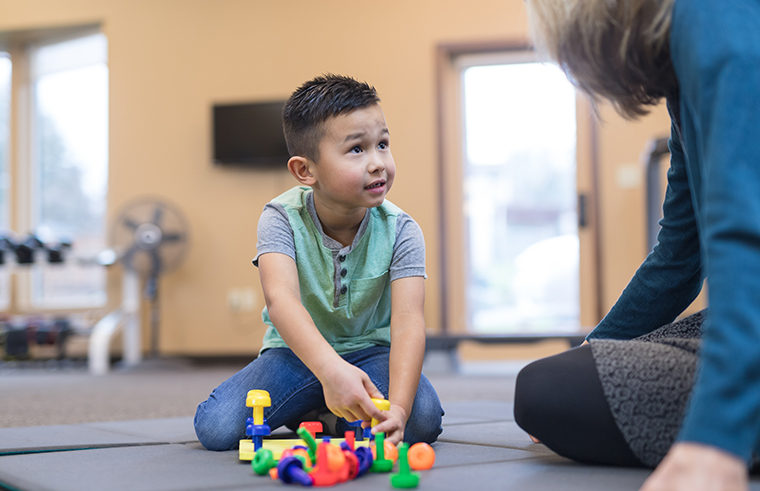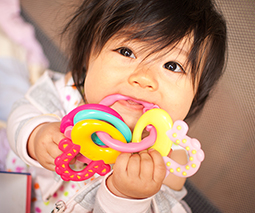Research tells us that well-designed kids’ hospitals help children feel better

“I like the window because it’s bright and sunny and it makes you forget all about being in hospital and being poked and prodded with needles”.
These are the thoughts of just one child who spends too much time in hospital.
As designers, this comment tells us that improving the design of children’s hospitals can have a profoundly positive impact on the wellbeing of young patients, their families and the staff working in paediatric care.

Now, our new evidence-based research, done in conjunction with an architecture practice that has extensive experience in paediatric hospital design, has identified some of the key design factors that can help foster effective experiences and outcomes for patients, families and staff.
Our research team, led by Professor Julie Willis, aims to understand the important relationships between the design of paediatric hospitals along with the experience of patients, parents and staff and what that means for the delivery of care.
Importantly, our project developed design guidelines that aim to improve paediatric hospitals through the use of good design for children and their families.
The effect of good design
The effect of architecture is difficult to measure: there is no one way of describing an architectural or design feature and everyone perceives them differently.
In fact, architectural design impacts users in different ways, for different reasons, and there is often a divide between how people use a space and how they perceive their use of the space.
Funded by an Australian Research Council Linkage grant, our research team from the Faculty of Architecture, Building and Planning at the University of Melbourne partnered with architecture practice, Lyons.
This blend of expertise meant we could identify the gaps in research around paediatric care; evaluating and prioritising the environmental design factors that contribute most significantly to positive outcomes for young patients and their families.

Although an extensive body of literature affirms the links between wellbeing and good design practice, there is a paucity of design guidance for architects when designing healthcare environments, particularly in the paediatrics.
But any research focused on the design of these environments must involve the children and young people. However, this can be challenging.
A paediatric hospital treats a range of patients aged from newborns through to eighteen year olds. Some patients cannot communicate as easily as others, and others are more vulnerable or sensitive. Working with children also requires robust ethics permissions.
But these young voices are important when it comes to research, and their participation is vital to ensure that design meets the needs of all children who use them.
Involving children
Developing specific data collections that prioritise the voices of children and young people is a crucial aspect of this project.
In order to get an understanding of the effect of architecture upon hospital users, our research incorporated more than 600 surveys of patients, caregivers and staff; two different drawing exercises done with children in the waiting room to understand their views on their experience in a paediatric hospital; and photo-response interviews with children – who were asked what they thought of photographs of various hospitals.

Our research also encompassed 182 hours of unobtrusive observations of waiting room areas, atriums, family lounges, play areas and other key public spaces.
We also spoke with architects and design teams for each hospital and undertook focus groups with patients, caregivers and staff covering topics like nature and distraction, wayfinding, and opportunities for socialisation.
Supporting families and reducing distress
Our project has led to the development of design guidance that aims to assist architects and government agencies to provide more supportive care environments for Australian children and their families.
Design strategies can support the positive effects of play in paediatric hospitals, support patients’ independence and empowerment, and illustrate how good design can support parents and reduce their distress.
For example, our study highlights the value of attractions like animal enclosures that can help reframe negative expectations of the hospital experience. Opportunities like these can help children and their families have a more positive view of the hospital experience, including a desire to return if they have to.
Our study also underscores the role of carefully designed parent-and-caregiver lounges that can provide supportive spaces during the child’s inpatient care. Large, bright and accessible parent lounges that include a communal dining table and lounge seating for several families enhances parent-to-parent peer support.
We also found that play in the waiting area can augment positive care experiences and reduce anxiety for child patients and their families.

Design strategies that allow for a contained space while also accommodating parental supervision, as well as space for parents to play with their child, can help foster the positive effects of play in the paediatric waiting room.
Our research underpins future decision-making about Australian paediatric hospital environments.
The aim is to help better-informed architects and designers create more supportive facilities – this, in turn, can lead to greater wellbeing for staff, patients and carers.
Crucially, it aims to provide better hospital experiences for younger patients and less stress for children and their families at a difficult time.
This article was written by the University of Melbourne’s Dr Stephanie Liddicoat with Professor Alan Pert, Professor Julie Willis, Dr Rebecca McLaughlan and Professor Philip Goad and first published on Pursuit. It’s republished here with permission. Read the original article.









